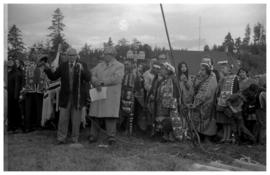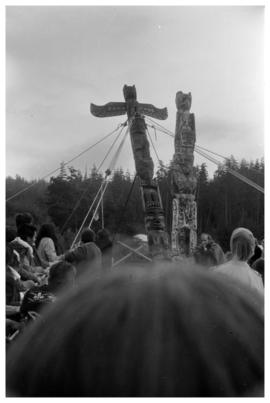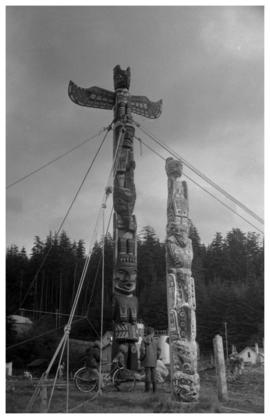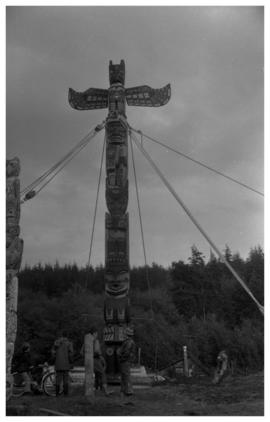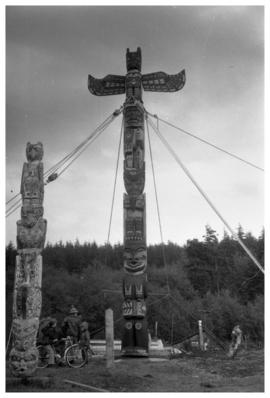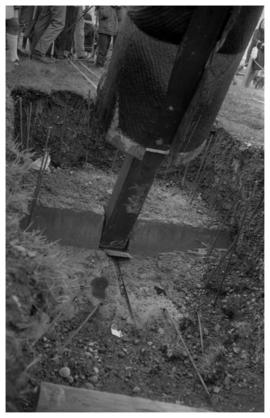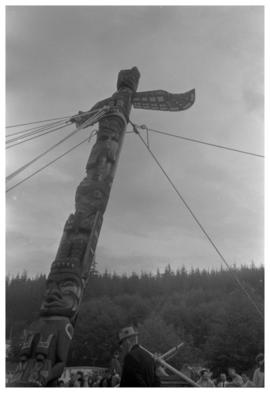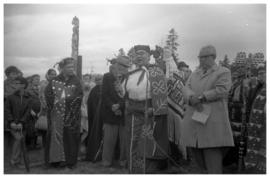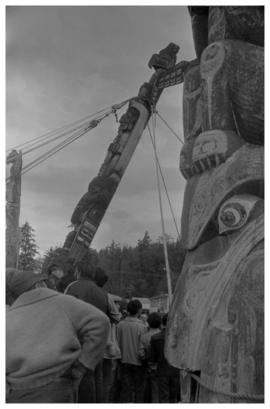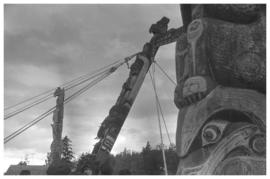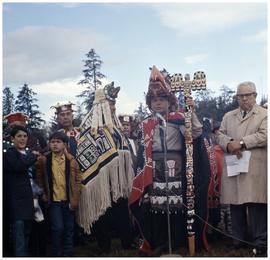- 1-4-C-2 (61.2-5; 62.1-4)
- Dossiê
- [199-?]
File contains a combination of images of Kwakwaka'wakw artifacts housed in various museums and images of historical Kwakwaka'wakw villages on Vancouver Island and along the Northwest Coast of British Columbia. Artifacts include totem poles, bentwood boxes, carvings, masks, and Kwakwaka'wakw artwork such as paintings and drawings. There are historical photographs of the following villages: Gwat'sinuxw (Quatsino), Kwikwasutinuxw (Gilford Island), A'wa'etlala Village (Knight's Inlet), Mamalikala (Village Island), Wiwekalu Village of T'la'mataxw (Campbell River), Kwixa Village (Salmon River), Dunaxda'xw Village (New Vancouver), and Gwa'sala Village (Smith Inlet). The textual records include information about some of the photographs, identifying items such as the people, the villages, and/or the artifacts depicted in the photographs.

